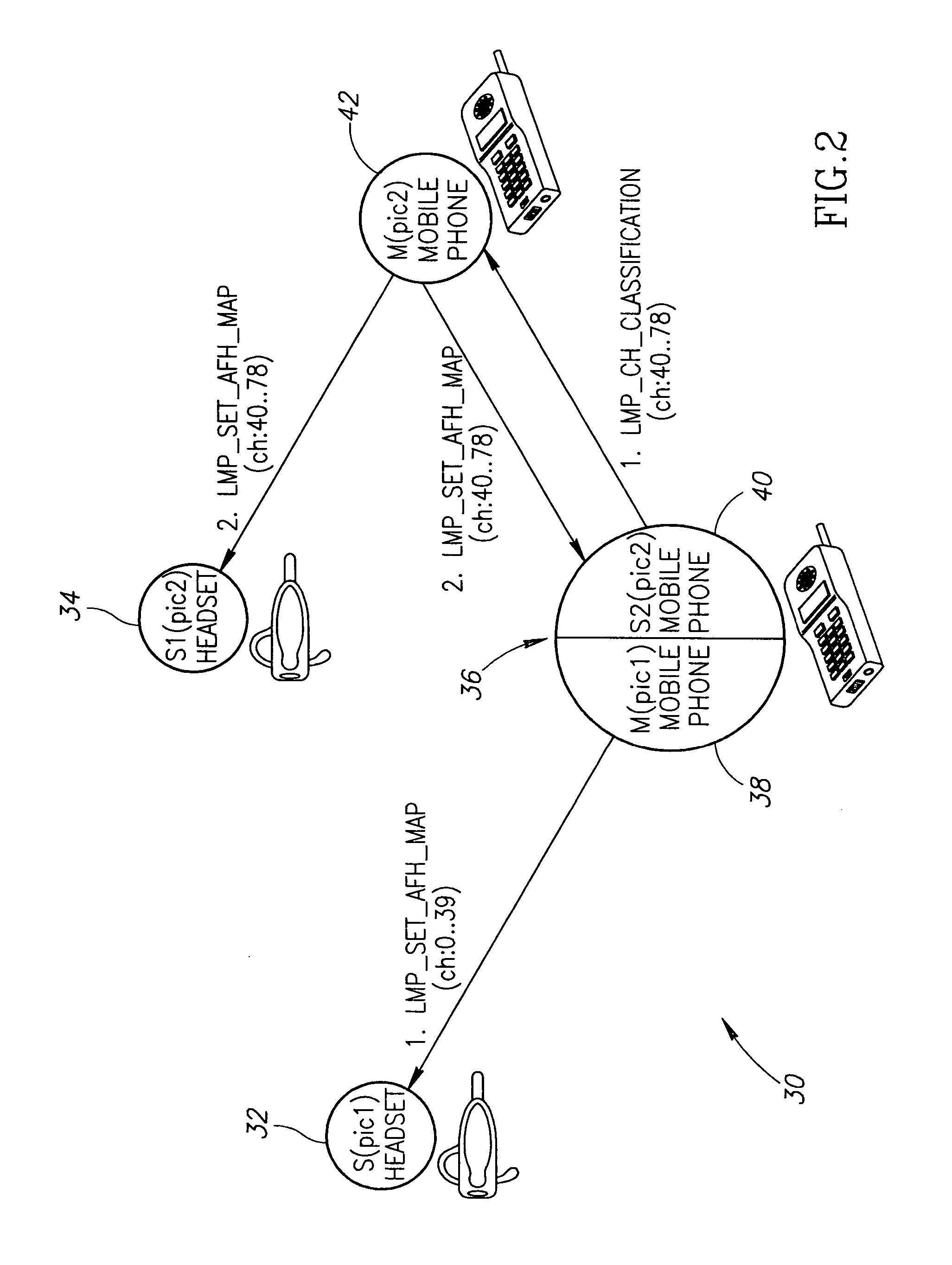Radio frequency collision avoidance mechanism in wireless networks using frequency synchronization
a technology of frequency synchronization and radio frequency, applied in the field of data communication, can solve the problems of reducing the transmission rate, so as to avoid radio frequency (rf) collisions
- Summary
- Abstract
- Description
- Claims
- Application Information
AI Technical Summary
Benefits of technology
Problems solved by technology
Method used
Image
Examples
first embodiment
nt
[0072] A block diagram illustrating an example ad hoc Bluetooth network including a device incorporating the mechanism of the present invention that is a master and slave in two piconets is shown in FIG. 2. The example network, generally referenced 30, comprises headsets 32, 34 and mobile phones36, 42. Two piconets are shown wherein the first (pic1) comprises the slave headset 32 and master mobile 38. The second piconets comprises the master mobile 42, slave mobile 40 and slave headset 34. The mobile 36 is a member of both pic1 and pic2 as master and slave, respectively.
[0073] A Bluetooth capable device can handle up to three different piconets. The same device can perform a master role in one piconet and perform a slave role in two other piconets. If the piconets use Adaptive Frequency Hopping (AFH), however, collisions are likely to occur in transmitting packets as a result of the same frequency being used in two or three piconets at the same time. To avoid RF collisions, the p...
second embodiment
Ordering
[0113] In a second embodiment of the invention, the RF collision problem is solved by using the same channel sequence order in all neighboring piconets while synchronizing each piconet to begin hopping on a different channel.
[0114] For example consider an example channel order: 0, 1, 2, 3, 4, 5, 6, . . . , 78, 0, 1, 2, . . . ). Each piconet is configured to use the same channel order. The starting frequency (or channel) of each piconets, however, is different as shown in FIG. 10. In this example, four piconets are listed wherein at time T piconet 1 uses channel 0, piconets 2 uses channel 1, piconets 3 uses channel 11 and piconets 4 uses channel 26. Although all the piconets use the same channel order, at any point in time each is transmitting on a different channel. In this manner, collisions are avoided and interference to voice traffic due to collisions with Bluetooth devices in neighboring piconets is prevented.
[0115] Currently, a device determines the channel transmitt...
PUM
 Login to View More
Login to View More Abstract
Description
Claims
Application Information
 Login to View More
Login to View More - R&D
- Intellectual Property
- Life Sciences
- Materials
- Tech Scout
- Unparalleled Data Quality
- Higher Quality Content
- 60% Fewer Hallucinations
Browse by: Latest US Patents, China's latest patents, Technical Efficacy Thesaurus, Application Domain, Technology Topic, Popular Technical Reports.
© 2025 PatSnap. All rights reserved.Legal|Privacy policy|Modern Slavery Act Transparency Statement|Sitemap|About US| Contact US: help@patsnap.com



